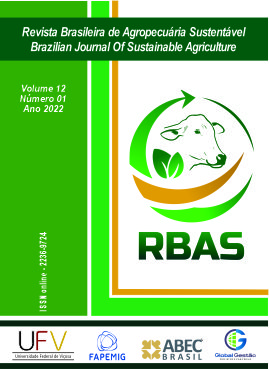SELECTIVITY OF REGISTERED AGROCHEMICALS FOR SOYBEANS AIMING IMMATURE PHASES OF Trichogramma pretiosum
DOI:
https://doi.org/10.21206/rbas.v12i1.14241Palabras clave:
Key-words: Phytosanitary control, insects management, interactions.Resumen
The aim of this study was to evaluate the effects of agrochemicals registered for soybean on parasitoid Trichogramma pretiosum in immature stages. Bioassays were conducted in the laboratory by exposing eggs parasited, using the methods proposed by the International Organization for Biological and Integrated Control of Noxious Animals and Plants (IOBC). The experimental design was completely randomized with eight replicates per treatment. The parameter for the classify agrochemical were based on the reduction of emergence of parasitoids (RE) evidenced by the number of parasitized eggs per female in the control. Based on the results obtained, all agrochemicals were innocuous to T. pretiosum in their immature stages.
Descargas
Descargas
Publicado
Cómo citar
Número
Sección
Licencia
Derechos de autor 2022 Brazilian Journal of Sustainable Agriculture

Esta obra está bajo una licencia internacional Creative Commons Atribución-NoComercial-SinDerivadas 4.0.
1. Proposta de Política para Periódicos de Acesso Livre
Autores que publicam nesta revista concordam com os seguintes termos:
Autores mantém os direitos autorais e concedem à revista o direito de primeira publicação, com o trabalho simultaneamente licenciado sob a Licença Creative Commons Attribution que permite o compartilhamento do trabalho com reconhecimento da autoria e publicação inicial nesta revista.












